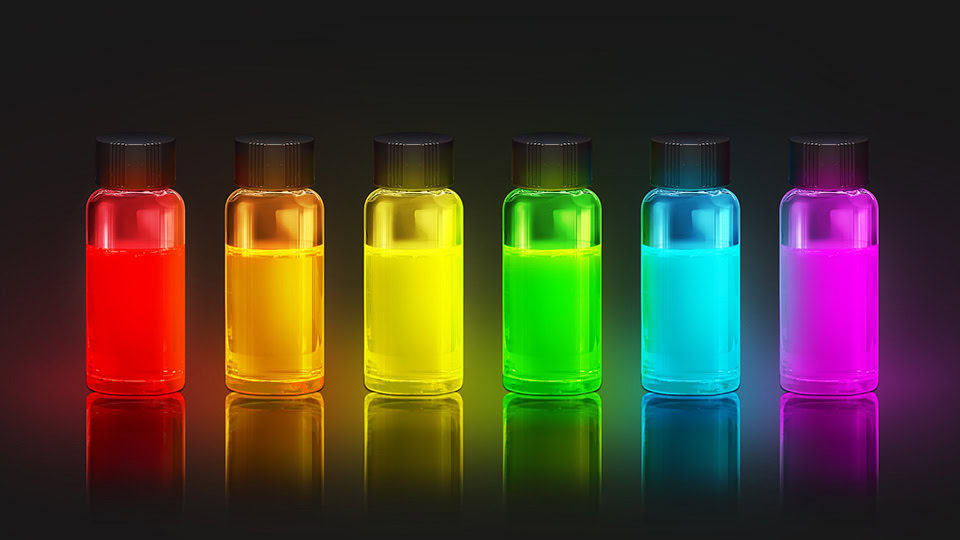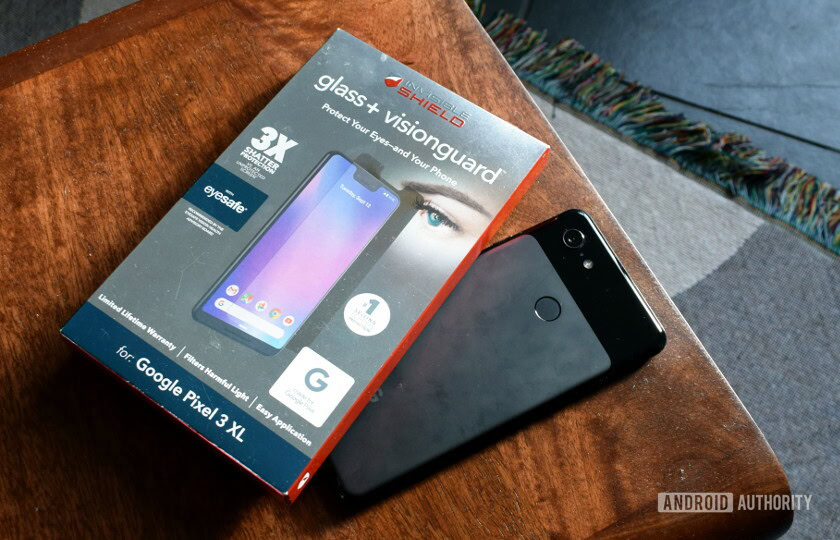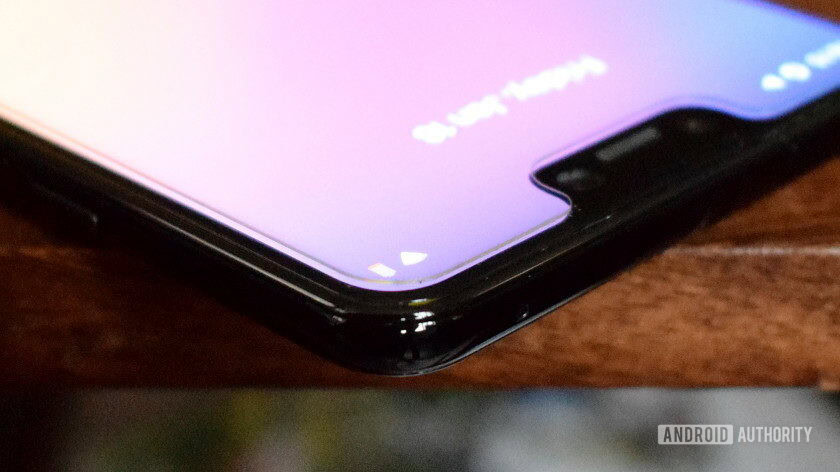Affiliate links on Android Authority may earn us a commission. Learn more.
Can a screen protector really filter harmful blue light? Here’s what we found.

Blue light gets a bad rap. It’s often cited as a leading cause of eye fatigue. As smartphone enthusiasts that spend plenty of time on our screens, such stories might make us rethink how much time we spend using phones, or find a way to filter out this blue light.
ZAGG’s latest Glass+ VisionGuard screen protector promises not only to keep your screen free from scratches and breaks but also to shield your eyes from the effects of blue light. While a lot of the health effects of blue light have been blown out of proportion, there is evidence suggesting blue light can make it more difficult to sleep in the evening. Hence the introduction of Night Light applications to tint your screen during the evening hours.

ZAGG’s Glass+ VisionGuard comes with everything you’d expect from a comprehensive screen protector package. It includes a wet wipe, microfibre cloth, and dust removal sticker, in addition to a guide tray to make application of the protector pretty much as easy as can be.
However, at $44.99, the Google Pixel 3 XL version ZAGG sent us is a rather expensive screen protector. Do the light filtering claims stack up?

Testing the scientific way
Here at Android Authority we already have the technology to test high-quality smartphone displays, so we ran a suite of tests on the Pixel 3 XL with and without the screen protector, as well as with the Night Light mode enabled.
We were looking for two things. First, a difference in color gamut to check for any blue light blocking. Second, a reduction in blue light intensity to showcase the loss in strength of any light being filtered out. In the graph below, keep an eye on the dots. They should fit into the relevant squares for perfect color reproduction and shift if a filter is applied.

We can see that the Pixel 3 XL’s screen, at maximum brightness, looks essentially the same with both the ZAGG screen protector on and off. If anything, the screen actually seems to take on a slightly bluer tint with the protector on. This is reflected in a white point temperature shift from 7121K to 7411K. The Pixel 3’s software night light mode produces a much more notable shift in color. The white point moves into orange with a 2902K reading. Blue light is still reproduced, but the colors has shifted well into the red and orange portion of the spectrum. This is obvious to see just by looking at the screen.
The ZAGG screen protector doesn’t tint the light passing through it, which is good for accuracy. So the second question is whether colors are being reproduced with a lower intensity. You might be familiar with nits or cd/m2 from screen brightness. Let’s look at that for all of the key colors.
The ZAGG screen protector dims screen brightness, but this is applied almost exactly evenly across all colors and there’s no noticeable targeted blue light attenuation. The company stated that avoiding the yellow tint associated with blue light filters is one of the goals of its technology, but this does little more than reducing the overall display brightness. Swapping the chart to a percentage change, brightness is reduced by 10 percent on average, though blue light intensity is only reduced by 7 percent. That’s not really what the company claims its product does, based on the marketing material. However, this might be handy at night to reduce your overall screen brightness and blue light further than the phone’s minimum setting.
In contrast, night light software shows far more significant reduction in light intensity across every color except red. Switching to the percentage change chart, most colors show a significant reduction in intensity. Furthermore, there’s a huge reduction in the brightness of blue content displayed, down by 78 percent. This is what we would expect from a traditional blue light filter.
What does ZAGG say?
We reached out to ZAGG with our findings and the company was kind enough to get back to us with a very detailed answer about how its technology works.
We’re not permitted to share some of the sciencey graphics it sent us, but in a nutshell ZAGG’s light filter targets a very specific frequency range of light — between 415 and 455nm. This is the widely accepted “harmful” HEV blue light wavelengths that cause eye fatigue. The Glass+ VisionGuard technology beats the 15 percent blue light reduction criteria to pass TUV Rheinland’s “RPF 15” certification.
So why didn’t our testing pick this up? There’s a surprisingly simple explanation — the Pixel 3 XL’s display simply does not emit light at a low enough wavelength to actually interact with ZAGG’s filter. We have not two, but three confirmations of this. First, the Pixel 3 XL’s color gamut matches the DCI-P3 color spectrum, which has a blue light cut off at approximately 465nm. I confirmed this by converting our recorded 100 percent blue CIE(x,y) coordinates and luminosity into a wavelength of 466nm. Finally, a chart that ZAGG sent us (which we can’t attach) confirms that the Pixel 3XL’s light spectrum falls off below 460nm.
In a nutshell, although ZAGG’s Glass+ VisionGuard screen protector may indeed filter out a specific spectrum of blue light, it’s not light that a functioning smartphone produces in any significant quantity. At best, the filtering frequency further attenuates already very small amounts of this 415-455nm range that may be given off by blue LEDs. Remember, the Pixel 3 XL’s blue light already falls off sharply below 465nm.

Blue-light filters don’t look great
Bottom line, the ZAGG screen protector doesn’t filter out the blue light produced by the Pixel 3 XL any more than it filters out other light, while Google’s software implementation clearly does. This product is certainly a nice idea, but it’s not going to offer much added value over a competing glass protector.
To be honest, it’s not so surprising that a transparent blue light filter protector doesn’t work as well as a filter with a notable yellow tint. Tinting occurs because a specific light is removed from the spectrum — the weaker the tint, the lower the strength of any filter. The ZAGG Glass+ VisionGuard protector is perhaps most useful at night to dim your screen even further, but that’s really all it’s doing.